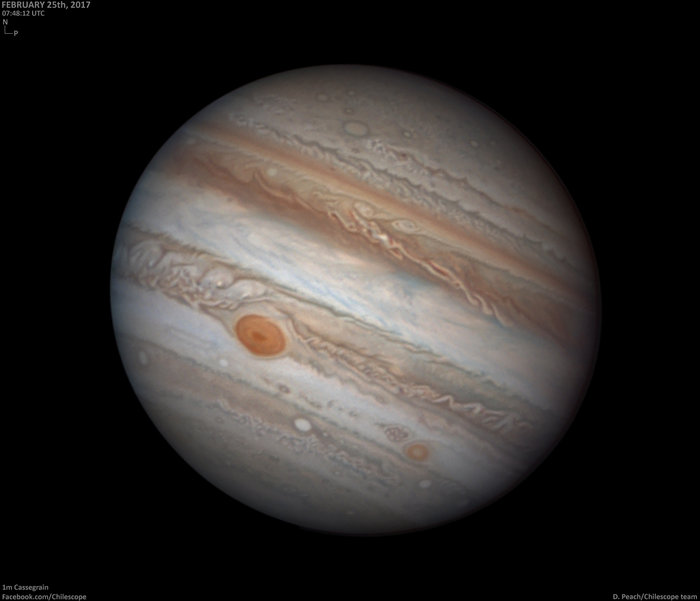Watch Jupiter Up Close On May 8
Language
Reading Level
Listen to Article

Tonight (May 8), Earth will pass between the sun and Jupiter, putting our solar system’s largest planet directly in opposition to the star. This means that Jupiter will rise shortly after the sun sets and stay up all night, making it the best time of year to see the massive gaseous world. While the planet will shine its brightest tonight, it will not reach its closest distance — 409 million miles (658 million km) — to Earth until May 10.
The reason its closest approach always occurs a couple of days after the opposition can be attributed to the shape of the orbits. According to the experts at EarthSky, "If our planets' orbits were perfect circles, then yes, we'd be closest together on the date Earth passes between Jupiter and the sun. But Earth's orbit and Jupiter's orbit are elliptical, like circles someone sat down on."

While Jupiter, which will be at its highest point in the sky after midnight, will be easily noticeable with the naked eye, experts recommend seeking out a small telescope if you want to see the cloud bands in the gaseous giant’s atmosphere. Also visible will be Jupiter’s four largest moons – Ganymede, Callisto, Europa, and lo. Observe the planet over a few days, or even hours, and you will notice the satellites, which appear like tiny dots, moving around.
The event is similar to when the Earth gets between the sun and the moon with one exception — while our satellite is in opposition every month, Jupiter only gets to this position once every 13 months. This means the next chance to see the planet up close will be on June 10, 2019. The timing is due to the differing speeds of the two worlds. While it takes Earth, which is merely 93 million miles away from the sun, just 12 months to orbit the star, it takes Jupiter, which lies a distant 484 million miles away, almost 12 years. As the faster-moving Earth catches up with the gaseous giant approximately every 13 months, it results in perfect alignment or, as astronomers like to call it, opposition.
The planet’s position is not the only reason Jupiter has been making headlines lately. On May 7, NASA released a stunning five-minute video (embedded below) highlighting some of the coolest discoveries made by the Juno spacecraft when it recently flew over the gaseous planet’s poles.

As it turns out, Jupiter is just the first of three planetary oppositions in store for stargazers this summer. On June 27, keep your eyes peeled for Saturn and its colorful rings, and about a month later, on July 31, Mars will be visible in its full glory. According to astronomers, the Red Planet will come within 35.8 million miles from Earth — the closest it’s been in 15 years — and appear twice as bright as Jupiter! Though the best days to see the various planets is when they are in opposition, they will be visible for a few weeks before and after the events as well.
Resources: earthsky.org,space.com

Get the Workbook for this article!
Workbook contains: Article, Reading Comprehension, Critical Thinking Questions, Vocabulary in Context (+ answers), Multiple Choice Quiz (+ answers), Parts of Speech Quiz (+ answers), Vocabulary Game (+ answers)Cite Article
Learn Keywords in this Article
308 Comments
- wowover 6 yearslol
- jawesomeboi75about 6 yearsLOL LOL LOL three "LOL"s.
- wOaHover 6 yearscOoL
- KAYLEEover 6 yearsso cool
- Natlyover 6 yearsthis is the coolest thing i have ever seen!
- destineyover 6 yearsoh my gosh
- Claytonover 6 yearsI love Jupiter
- Claytonover 6 yearsthats cool
- naruover 6 yearsThats cool💯
- dakayshia hamilover 6 yearsso awesome
- aydanover 6 yearscool that's weird




